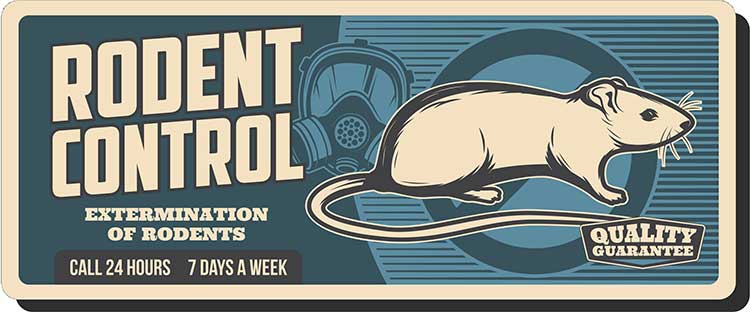How to Get Rid of Mice and Rats
Last updated November 2024

A mouse will live in any protected space close to food, usually spending its entire life (about a year) within a 20-foot radius. In that time a female could raise as many as 35 pups. You can detect the critters by their rod-like droppings, which are dark brown or black and less than 3/16-inch long.
Rats usually lurk in underground burrows, under piles of lumber or debris, in spaces between walls, and in attics. Indications of rat infestation include burrows and droppings (3/4-inch long, capsule-shaped). Mature rats weigh between 1/2 and one pound. They live for about a year, during which a female usually weans about 20 young.
Mice are curious and likely to be most interested in food (or bait) that is moved around from day to day. Rats, on the other hand, are suspicious.
Both rats and mice can spread diseases such as salmonellosis. Rats spread other diseases by biting humans (thousands each year) and carrying fleas that bite humans. In addition, rats cause fires by gnawing electrical wire insulation.

How to Stop Them
To control mice or rats, start by eliminating their access to food. Seal items in your pantry (including stuff in cardboard containers), and place garbage in sturdy, tight containers. When the food supply grows scarce, rodents begin to kill one another off and migrate to better conditions.
Then, keep rodents out by closing off all openings to your home more than 1/4 inch in size. Mice and rats can get in through foundation cracks, around or under door and window frames, and through any surface they can gnaw or burrow through.
You may be able to control a small infestation with traps; a wood-base snap trap baited with peanut butter is ideal. Sticky traps are another option, but many people consider them inhumane.
Place traps perpendicular to walls, with trigger ends toward the walls so rats or mice will run over them.
Large problems will probably require poison baits, usually anticoagulants. Some rodent poisons have the safety advantage of requiring daily doses for several days to kill a rodent—and even more to affect a human. Since a single accidental dose won’t be fatal, you must maintain a continuous supply until it takes effect. Some contain denatonium benzoate, a substance so bitter that humans and pets can’t stand it, though rats don’t notice it.
If you use poison baits—even the relatively safe types—place them out of reach of pets and children, but don’t forget where they are. For maximum effectiveness, use fresh bait and smooth it regularly so you can see whether it is being taken. Place baits at multiple locations eight to 10 feet apart, because mice may never travel more than 10 or 20 feet, and even rats rarely range more than 150 feet.
Hiring Help
If you’re not squeamish, you can attack rats or mice on your own; the traps and poisons available to you are the same that the pros will use. And while you’ll probably have to pay a pro for repeat visits, an exterminator is likely to be more knowledgeable about the pests’ habits than you are.


